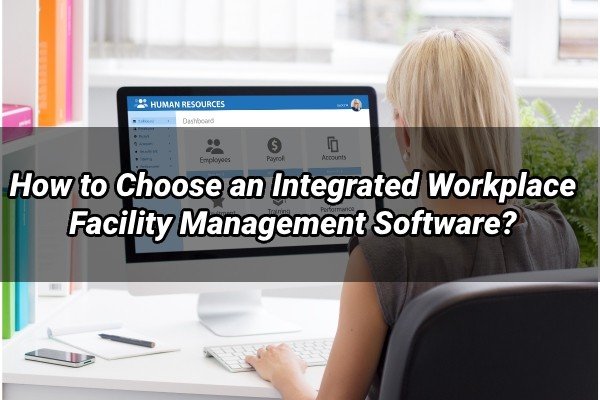Complete Guide to IWMS: Key Components and Advantages


The rise of Integrated Workplace Facility Management Systems marks a significant advancement in managing workspaces. These systems integrate diverse functions like space allocation, asset upkeep, real-time monitoring, and enhancing employee experiences. Combining these tasks into a unified platform allows businesses to streamline operations, boost efficiency, and improve overall productivity. This evolution underscores the need for cohesive solutions that simplify facility management while maximizing the utilization of resources.
Contents
What is an Integrated Workplace Facility Management System?
An Integrated Workplace Facility Management System refers to a comprehensive solution that brings together multiple aspects of facility management. It merges various functions, including space optimization, asset maintenance, real-time tracking, and enhancing user experiences. By providing a centralized platform, organizations can effectively manage their physical assets, spaces, and services. This integration streamlines operations, improves decision-making, and enhances the overall efficiency and functionality of the workplace environment.
Understanding the Different Components of IWMS
Space management and optimization
This component focuses on efficiently allocating and utilizing available space within a facility. It involves tracking occupancy, configuring layouts, and making informed decisions to enhance workspace utilization, ultimately contributing to a more productive and organized environment.
Asset management and maintenance
This facet involves the effective management and upkeep of physical assets within a workplace. From equipment to furnishings, the system facilitates tracking, maintenance scheduling, and predictive maintenance to ensure assets are in optimal condition, reducing downtime and costs.
Real-time monitoring and analytics
Real-time monitoring employs IoT technology to gather data about various aspects of the facility, such as energy usage, environmental conditions, and occupancy. Through data analytics, organizations gain actionable insights that enable informed decisions for resource optimization and operational improvements.
Employee and tenant experience enhancement
This component is dedicated to creating a seamless and satisfying experience for occupants. Through reservation systems, personalized interfaces, and service enhancements, the system enriches the workplace experience, boosting employee morale, productivity, and tenant satisfaction.
What Are the Benefits and Why to Implement?
An Integrated Workplace Facility Management System (IWFM) offers a comprehensive approach to managing and optimizing various aspects of a workplace environment. This system combines technology, processes, and data to streamline facility management operations and improve overall efficiency. Here are some benefits of implementing an Integrated Workplace Facility Management System:
Centralized Data Management
IWFM systems centralize data related to facilities, assets, maintenance, space utilization, and more. This makes it easier for facility managers to access real-time information, track changes, and make informed decisions.
Improved Efficiency
By integrating various functions such as maintenance, space allocation, asset tracking, and energy management, IWFM systems help streamline processes. This leads to reduced manual efforts, minimized duplication of tasks, and improved operational efficiency.
Cost Savings
With better tracking of maintenance schedules, energy consumption, and space utilization, IWFM systems can identify areas where cost savings can be achieved. Preventive maintenance and optimized space allocation contribute to reduced operational costs over time.
Enhanced Space Utilization
IWFM systems provide insights into how office space is used. This helps organizations make informed decisions about space allocation, desk sharing, and layout optimization, leading to more efficient use of available space.
Predictive Maintenance
By leveraging data analytics and predictive algorithms, IWFM systems can anticipate equipment maintenance needs. This minimizes downtime, prolongs the lifespan of assets, and reduces the likelihood of costly emergency repairs.
Real-time Monitoring and Alerts
IWFM systems provide real-time monitoring of critical infrastructure, such as HVAC systems, security systems, and fire alarms. This ensures that facility managers receive immediate alerts in case of any anomalies, allowing for prompt response and issue resolution.
How to Choose the Right IWMS Software?
Choosing the right Workplace Facility Management System is a critical decision that can significantly impact the efficiency and effectiveness of your organization’s operations. Consider this point while choosing IWMS.
Assess Your Needs and Objectives
Before evaluating any IWMS system, conduct a thorough assessment of your organization’s needs, objectives, and challenges. Identify the specific facility management tasks you need to streamline, such as space management, maintenance, asset tracking, and more. Understand your growth plans, the number of locations you manage, and any unique requirements that might influence your choice.
Functionality and Features
Evaluate the features and functionalities offered by the IWFM system. Ensure it covers the core aspects of facility management that are relevant to your organization. Look for features like space utilization tracking, maintenance scheduling, work order management, energy consumption monitoring, reporting and analytics, and integration with other business systems (such as HR or financial software).
Scalability and Customization
Consider the system’s scalability to accommodate your organization’s future growth. Can the IWFM system handle an increasing number of facilities, users, and data as your organization expands? Additionally, assess its customization capabilities. Your facility management processes may have unique requirements, so the system should allow for customization without compromising its overall stability.
User-Friendly Interface and Training
A user-friendly interface is crucial for the successful adoption of the IWFM system across your organization. The system should be intuitive and easy to navigate for both novice and experienced users. Furthermore, inquire about the training and support provided by the vendor. Adequate training and ongoing assistance will ensure that your staff can effectively use the system to its full potential.
Integration and Data Security
Integration with other software and systems your organization uses is essential for a seamless flow of information. Ensure that the IWFM system can integrate with your existing tools, such as Enterprise Resource Planning (ERP), a computerized maintenance management system (CMMS), or HR software. Additionally, prioritize data security. The system should have robust security measures in place to protect sensitive facility data from breaches and unauthorized access.
Vendor Reputation and Support
Research the reputation and track record of the Integrated Workplace Facility Management System vendor. Read customer reviews, testimonials, and case studies to gauge user satisfaction. Look into the vendor’s history of providing updates, bug fixes, and customer support. A reliable vendor with a history of responsive customer service will help address any issues that arise during implementation or usage.
In conclusion, the emergence of Integrated Workplace Facility Management Systems represents a transformative leap inefficient workspace management. By integrating space optimization, asset maintenance, real-time monitoring, and employee experience enhancement, these systems empower organizations to streamline operations, cut costs, and elevate productivity. The careful selection of an IWFM system, based on thorough needs assessment, robust features, scalability, usability, integration capabilities, and vendor reliability, ensures a tailored solution that aligns with the unique requirements of each organization.









